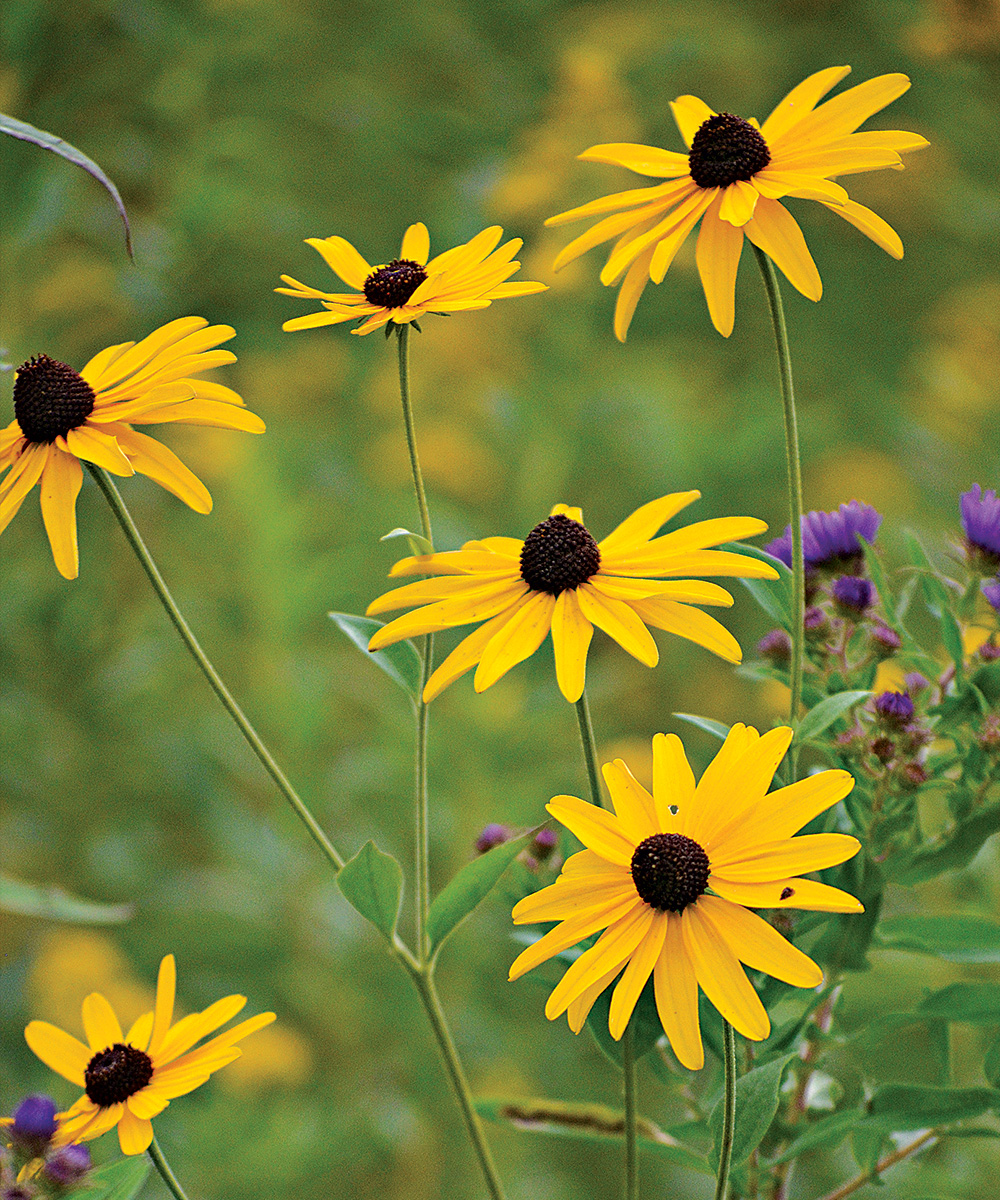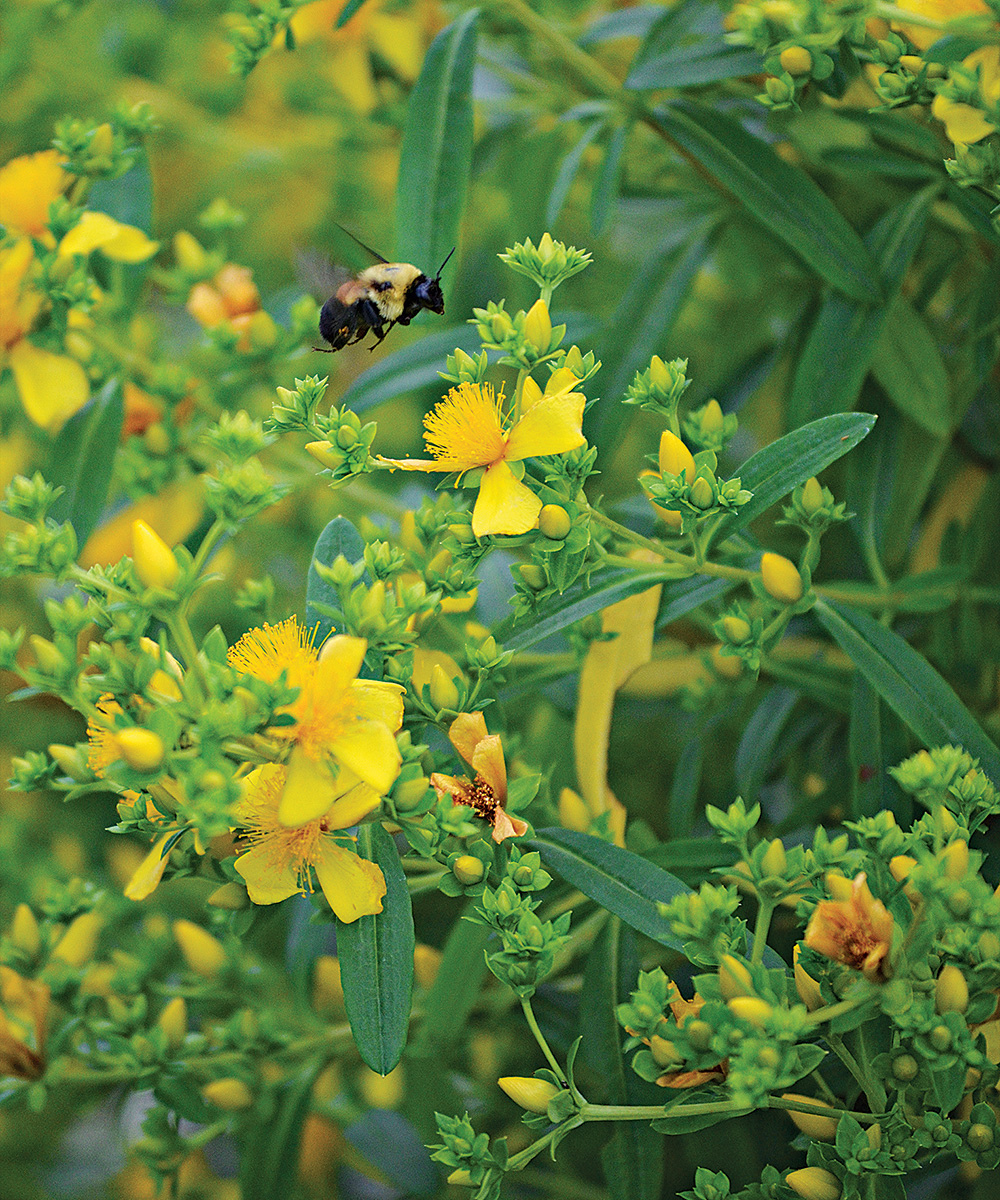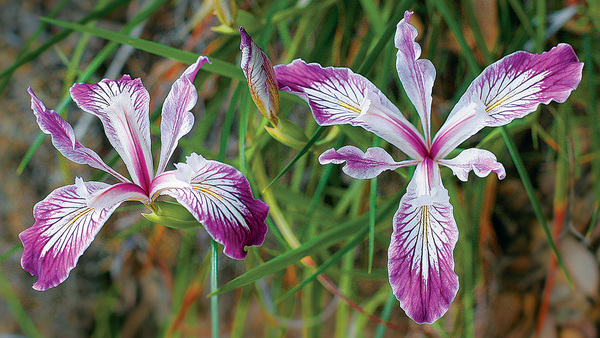
Growing native plants is the gardening equivalent of having your cake and eating it too. Not only are these plants beautiful and more likely to thrive in your landscape, they also play a crucial role in sustaining the living landscape for pollinators, birds, and other animals.
For their seemingly endless benefits, it’s always worth adding another native plant to your garden. Below, find native plants for the Midwest that will please human, animal, and insect guests in your garden.
1. Sweet Black-Eyed Susan

Name: Rudbeckia subtomentosa
Zones: 3–8
Size: 3 to 5 feet tall and 1 to 2 feet wide
Conditions: Full sun to partial shade; moderately moist to moderately dry soil
This perennial black-eyed Susan will be in your garden for many years, slowly expanding. It begins flowering in August and will persist for weeks, attracting a wide array of insects. It will perform best in loamy soils but is also able to withstand less-than-ideal conditions. A neighbor once used this plant as a living fence—what a great neighbor!
2. Wild Senna

Name: Senna hebecarpa
Zones: 4–8
Size: 4 to 5 feet tall and 3 to 4 feet wide
Conditions: Full sun to partial shade; average to moderately wet soil
This very sturdy, underutilized legume is recognized for its showy yellow flowers and attractive foliage. Deer tend to avoid this plant, while a number of beneficial insects are attracted to it. In early fall, larger black seed pods form and will easily open, allowing you to share this plant with others. Its foliage will also turn yellow in autumn for an additional season of interest.
3. Ohio Spiderwort

Name: Tradescantia ohiensis
Zones: 4–9
Size: 2 to 3 feet tall and 1½ to 2½ feet wide
Conditions: Full sun to partial shade; moist to dry soil
On hazy Midwest summer mornings, large stands of Ohio spiderwort growing in the wild can look like small blue lakes. This is the most widespread of the spiderworts, and it will flower dependably for more than a month. The rich green, succulent leaves store water, allowing this plant to thrive in sandy sites. It is easy to grow from its fossil-like seeds, especially if fall-planted. It often begins to go dormant in late summer, at which time it can be trimmed to the ground.
4. Shrubby St. John’s Wort

Name: Hypericum prolificum
Zones: 4–8
Size: 3 to 5 feet tall and wide
Conditions: Full sun to partial shade; moderately wet to moderately dry soil
Here’s a long-lived bush that can be pruned in early spring to maintain its compact appearance. It can also be grown as a hedge. This is the plant you want for attracting bumblebees; when the showy yellow flowers begin blooming in midsummer, the bees seem to come in swarms, crawling over each other as they gather the pollen. The flowers continue for weeks and are eventually replaced with pods containing tiny seed. Deer and rabbits mostly avoid this plant.
Bill Carter is president and co-owner of Prairie Moon Nursery in Winona, Minnesota.

















Comments
Log in or create an account to post a comment.
Sign up Log in